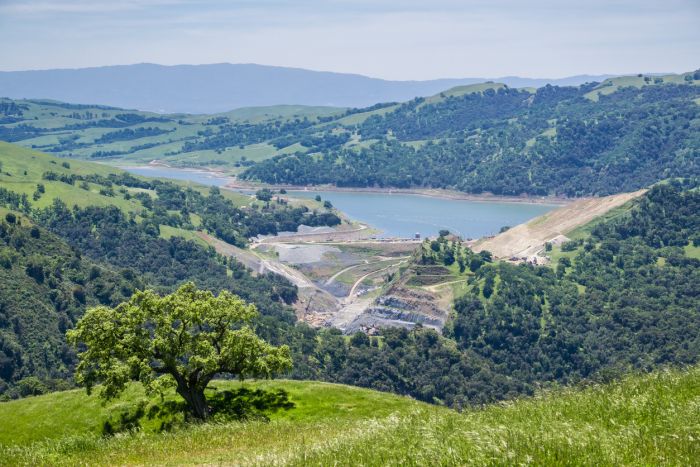



自然災害はどこでも発生しますが、カリフォルニアも例外ではありません。州全体で山火事が猛威を振るったとき、カリフォルニアは労働者に屋外での作業を制限する屋内作業を求めました。このケースでは、サンフランシスコ公益事業委員会 (SFPUC) に導入されたシステムが役立ちました。
サンフランシスコ湾岸地域のアラメダ郡非法人地域にあるカラベラス ダムは、1913 年に建設され、1925 年に交換されました。当時は世界最大のアース フィル ダムでした。再建は最初の建設からほぼ 100 年後の 2011 年に始まり、2019 年にプロジェクトが完了しました。このダムは遠隔地にあり、悪天候時にはアクセスが困難なため、手動で測定するには時間がかかります。SFPUC は、この課題を克服するソリューションを見つけたいと考えていました。
ダムは、建設完了から 4 年後の 2023 年 4 月に満水になりました。過去 10 年間、ダムは地震の懸念から 25% の容量で満たされていました。カラベラス貯水池の新しいカラベラス ダムは SFPUC のベイエリア最大の貯水池であり、270 万人の顧客にベイエリアの貯水容量のほぼ半分を提供しているため、満水になったことは重要です。
SFPUC は、AECOM、Terracon、Campbell Scientific と連携して、ダム監視を自動化するソリューションを模索しました。自動データ収集システム (ADAS) とも呼ばれる自動監視プラットフォームは、水道システムのオペレーターとエンジニアがリアルタイム データを受信できるように構成されています。このデータとともに、チームは、ダムが閾値レベルと計測器の読み取り値の変化率を超えた場合にオペレーターとエンジニアに警告するアラーム システムを実装しました。
このプラットフォームは SFPUC にとって有益です。前回の暴風雨シーズン中、土砂崩れが発生し、新しいカラベラス ダムに続く道路が閉鎖されました。貯水池はまだ満水状態だったため、SFPUC のオペレーターは週次レポートに加えて毎日の検査レポートを提出する必要がありました。オペレーターは中断することなくデータを受け取り続け、州の規制に従うことができました。
SFPUC は検査、監視、報告の頻度を減らすことはできませんが、「ADAS システムによってデータ報告プロセスがスピードアップし、ダムのパフォーマンスをリアルタイムで監視できるようになりました」と、SFPUC のシニア エンジニアである Stacie Feng 氏は述べています。システムの利便性により、SFPUC は時間を節約できましたが、電子面のサポートが必要な、中程度の学習曲線があります。Campbell Scientific のコンサルタント兼システム デザイナーである Mark Wallace 氏は、SFPUC のオペレーターが電子面と IT 面を学習している間、継続的なサポートを提供してきました。「彼は素晴らしいサービスを提供しています。彼は反応が良く、知識が豊富で、助けることに熱心です」と Feng 氏は述べています。
このプロジェクトのエンジニアたちは、Campbell Scientific社と協力し、このダムに必要な機器を設置しました。彼らは、自社の技術と連携して機能し、長期間の使用に耐える機器を求めていました。AECOM の主任エンジニアであるマシュー ハイアット氏は、「4 社間のコミュニケーションが重要な要素でした。解決策を迅速かつ簡単に見つけることができました」と述べています。